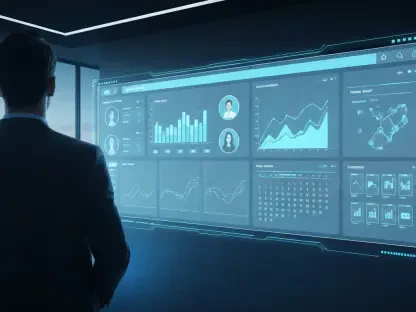In the highly regulated world of pharmaceuticals and biomedical industries, ensuring that computerized systems meet stringent compliance standards while maintaining operational efficiency is a formidable challenge that many organizations grapple with daily. GAMP 5, a comprehensive guidance document from the International Society for Pharmaceutical Engineering (ISPE) titled “A Risk-Based Approach to Compliant GxP Computerized Systems,” offers a robust solution to this complex issue. Spanning over 400 pages, this resource is far more than a set of rigid rules; it provides a flexible, adaptable framework that caters to a wide range of systems, from IT infrastructure to laboratory tools. Its significance extends beyond just one sector, proving valuable even in areas like medical devices where specific guidance might be lacking. Designed for system owners, suppliers, and regulators, GAMP 5 addresses every stage of a system’s journey, ensuring that compliance is not a one-time achievement but a sustained effort. This makes it an essential tool for navigating the intricate landscape of regulatory demands with confidence and precision.
The true strength of GAMP 5 lies in its practical approach to bridging theoretical compliance with real-world application, offering actionable insights often absent in other validation guides. It covers everything from software selection to long-term maintenance. One particularly notable feature is its focus on everyday tools, such as spreadsheets, which are frequently a source of validation headaches in regulated environments. By providing clear strategies for managing such tools, it demonstrates a commitment to solving tangible problems. Furthermore, with updates in its second edition addressing modern technologies like artificial intelligence and blockchain, the guidance remains relevant amid rapid technological advancements. This blend of practicality and forward-thinking adaptability positions GAMP 5 as a cornerstone for any organization striving to balance regulatory adherence with operational needs in an ever-evolving industry.
Core Principles of Risk-Based Compliance
Foundations of a Scalable Framework
GAMP 5 introduces a risk-based methodology that stands as a defining feature, allowing companies to customize validation efforts according to the specific risks and requirements of their systems. Unlike rigid standards that enforce uniform processes, this approach prioritizes scalability and flexibility, ensuring that resources are directed toward high-impact areas. It aligns seamlessly with established industry benchmarks like ASTM E2500, reinforcing its credibility as a trusted framework. This methodology empowers organizations to assess the criticality of each system component, focusing validation on aspects that directly influence product quality or patient safety. By doing so, it avoids unnecessary burdens on less critical elements, streamlining compliance without compromising integrity. Such a tailored strategy is particularly beneficial in regulated industries where diverse systems, from process control to data management, demand varying levels of scrutiny to meet GxP standards effectively.
This risk-based framework also fosters a deeper understanding of product and process dynamics, which is essential for designing systems that are fit for purpose. By grounding decisions in scientific reasoning and quality risk management, GAMP 5 ensures that validation activities are not only compliant but also meaningful. Companies can prioritize efforts based on potential impacts, such as risks to data integrity or regulatory adherence, rather than applying blanket measures across all systems. This nuanced approach helps maintain a balance between regulatory demands and operational efficiency, reducing the likelihood of over-validation that can drain resources. Additionally, it encourages continuous assessment throughout a system’s life, adapting to changes in technology or regulatory expectations. The result is a dynamic compliance strategy that evolves with the organization, safeguarding both quality and innovation in highly regulated environments.
Comprehensive Life Cycle Perspective
At the heart of GAMP 5 is its life cycle model, which provides a structured pathway for managing systems from concept through to retirement, ensuring a comprehensive approach to compliance. This model divides the journey into distinct phases—concept, project, operation, and retirement—each with specific activities to ensure sustained compliance. What sets this apart from other frameworks is the emphasis on post-implementation phases, particularly operation, where systems are in active use for extended periods. Often overlooked in other guides, this focus on ongoing maintenance ensures that systems remain fit for purpose long after initial deployment. By addressing potential issues like software updates or hardware degradation, the guidance helps prevent compliance lapses that could arise over time, offering a holistic view that spans the entire lifespan of a system.
Mapping directly to typical software project stages, the life cycle phases offer a familiar structure for implementation teams and suppliers alike. The concept phase tackles system selection, ensuring alignment with user needs from the outset, while the project phase focuses on design and implementation with rigorous testing. The operation phase, critical for long-term success, emphasizes monitoring and maintenance to uphold a validated state, and the retirement phase ensures proper decommissioning to avoid data or security risks. This cradle-to-grave perspective not only aligns with project management practices but also integrates validation into broader quality management systems. Such integration minimizes disruptions and embeds compliance into daily operations, making GAMP 5 a practical guide for navigating the complexities of system management in regulated sectors.
Practical Applications for Streamlined Validation
Harnessing Supplier Expertise
A pivotal aspect of GAMP 5 is its advocacy for supplier collaboration as a means to enhance validation efficiency, allowing organizations to significantly reduce redundant efforts in testing and documentation. By leveraging supplier documentation and expertise, this principle resonates with regulatory goals to minimize paperwork burdens. This collaborative approach, supported by bodies like the FDA, encourages shared responsibility between regulated companies and their suppliers, ensuring that both parties contribute to compliance outcomes. It allows for the reuse of existing records and test results provided by suppliers, cutting down on time and resources spent on duplicative tasks. This strategy is particularly effective in industries where complex systems require extensive validation, as it streamlines processes without sacrificing the rigor needed to meet GxP standards.
Beyond just reducing workload, supplier involvement fosters a partnership model that enhances overall system quality. Suppliers often possess deep knowledge of their products, from design intricacies to potential risks, which can inform more targeted validation activities. GAMP 5 guides organizations on how to integrate this expertise into their processes, ensuring clear communication and well-managed handovers during implementation. This collaboration also aligns with the broader industry trend toward efficiency, where regulatory expectations increasingly favor science-based, streamlined approaches over exhaustive documentation. By embedding supplier contributions into the validation life cycle, companies can focus on critical areas of risk while maintaining trust with regulators, ultimately achieving a more sustainable compliance framework.
Actionable Strategies for Efficiency
GAMP 5 offers nine specific recommendations to boost validation efficiency, providing a practical edge over other resources in the field. These include establishing clear, verifiable user requirements from the start to avoid misalignments, and employing risk-based decision-making to prioritize high-impact areas. Other strategies, such as efficient testing practices and proactive change management, help organizations avoid delays and rework during implementation. Well-managed handovers between project phases ensure continuity, while anticipating needs like data archiving prevents future bottlenecks. These actionable tips collectively enable companies to cut through unnecessary complexity, focusing efforts where they matter most while adhering to regulatory expectations in a streamlined manner.
Another key recommendation is the use of automation and tools to enhance validation processes, a forward-thinking approach that aligns with modern industry practices and ensures greater efficiency. Automation can handle repetitive tasks like testing or documentation, freeing up resources for more critical analysis. Additionally, leveraging existing records, as advised by GAMP 5, minimizes duplication of effort, especially when working with trusted suppliers. This focus on efficiency extends to planning for data migration early in the system life cycle, avoiding last-minute challenges that could derail compliance. By adopting these strategies, organizations not only save time and resources but also build a more robust validation process that can adapt to evolving needs, ensuring sustained compliance with minimal disruption to operations.
Simplifying Everyday Tool Validation
One of the lesser-known but highly valuable components of GAMP 5 is its guidance on managing end-user applications like spreadsheets, found in Appendix S3. Widely used in regulated environments for data analysis and reporting, spreadsheets often pose significant validation challenges due to their informal nature and potential for errors. GAMP 5 addresses this by introducing a classification system with five categories—ranging from simple tabulation tools with no calculations to complex templates used repeatedly. This framework allows organizations to tailor validation efforts based on the spreadsheet’s purpose and risk level, significantly reducing the time and resources spent on low-risk applications while ensuring critical uses are adequately controlled.
The practical impact of this guidance cannot be overstated, as it tackles a common pain point in regulated settings where spreadsheets are ubiquitous yet often mismanaged. For instance, spreadsheets used as disposable tools require minimal validation, while those functioning as databases are flagged for conversion to proper applications due to inadequate controls. Templates, on the other hand, can be reused without revalidation if properly managed, offering efficiency gains. By providing such clear, pragmatic solutions, GAMP 5 helps organizations navigate the complexities of validating everyday tools without overcomplicating the process. This focus on practical applicability underscores the guidance’s broader mission to simplify compliance, making it accessible even for routine operational challenges.
Updates and Modern Relevance
Adapting to Technological Advances
The second edition of GAMP 5 reflects a commitment to staying ahead of technological trends, introducing new appendices on cutting-edge topics like artificial intelligence, machine learning, and blockchain. These additions address the unique compliance challenges posed by emerging technologies in regulated industries, ensuring that organizations have guidance for integrating such innovations safely. Significant updates to sections on requirements specification and electronic production records also align with current practices, while outdated content, such as merged functional specifications, has been streamlined. These revisions demonstrate a proactive approach to maintaining relevance, equipping companies with the tools to navigate modern challenges without sacrificing compliance or efficiency in their operations.
Beyond new content, the second edition emphasizes critical thinking and agile methodologies, reflecting a shift toward more dynamic development processes in regulated environments. Agile approaches, for instance, allow for iterative validation, adapting to changes quickly without extensive rework, which is vital in fast-paced tech landscapes. The inclusion of software tools as a focus area further supports automation and efficiency, aligning with industry demands for reduced manual effort. These updates ensure that GAMP 5 remains a forward-looking resource, capable of addressing both current needs and future innovations. For organizations adopting new technologies, this edition offers a roadmap to compliance that keeps pace with rapid advancements, safeguarding quality in an evolving digital era.
Versatility Across Different Needs
Even with the comprehensive updates in the second edition, the original version of GAMP 5 retains significant value for organizations not yet dealing with newer technologies. Many companies in regulated industries operate with established systems that do not require the integration of AI or blockchain, and for them, the core principles and frameworks of the first edition remain fully applicable. This adaptability highlights the guidance’s strength in catering to a wide range of needs, ensuring that it does not force unnecessary changes on organizations with simpler requirements. Such flexibility allows firms to choose the version that best fits their operational context, maintaining compliance without overhauling processes that are already effective.
This versatility extends to the guidance’s broader applicability across different sectors and system types, reinforcing its role as a universal tool that can adapt to various needs. Whether dealing with process control systems, laboratory tools, or IT infrastructure, GAMP 5 provides a consistent framework that can be scaled to fit specific demands and ensure effective implementation. For smaller organizations or those with limited resources, sticking to the foundational elements of the first edition can still yield robust compliance outcomes. Meanwhile, the option to adopt updated content as needed ensures that the guidance evolves with organizational needs, offering a sustainable path to validation. This dual relevance underscores GAMP 5’s enduring utility as a resource that meets diverse challenges without losing its core focus on practical, risk-based compliance.
In-Depth Resources for Implementation
Detailed Planning and Development Support
The appendices of GAMP 5 serve as an invaluable resource, offering detailed guidance on critical aspects of system management, starting with management and development. The management appendix includes 12 elements focused on planning and reporting, ensuring that every stage of a project is thoroughly documented and aligned with compliance goals. Meanwhile, the development appendix, with 11 elements, dives into specifications, testing protocols, and specialized topics like data migration—a subject rarely covered in such depth elsewhere. These sections provide implementation teams with concrete steps to design and validate systems, addressing both technical and regulatory requirements with precision. This level of detail equips organizations to tackle complex projects with confidence, minimizing oversight and ensuring a strong foundation for compliance.
Further enhancing its utility, the development guidance in GAMP 5 emphasizes practical solutions for common challenges encountered during system implementation. Data migration, for example, is often a stumbling block due to risks of data loss or corruption, yet the appendices offer structured approaches to mitigate these issues. Similarly, testing protocols are outlined to balance thoroughness with efficiency, preventing delays while maintaining quality. These resources are particularly beneficial for quality assurance teams tasked with aligning technical deliverables with regulatory expectations. By providing such actionable content, the appendices transform GAMP 5 from a theoretical guide into a hands-on toolkit, enabling organizations to navigate the intricacies of system development with clarity and purpose.
Sustaining Compliance Through Operation
Equally critical are the operation-focused appendices in GAMP 5, which include 13 elements dedicated to maintaining a validated state after implementation—a phase often neglected in other frameworks. These sections cover essential practices like monitoring, periodic reviews, and incident management, ensuring that systems remain compliant during their active use, which can span years. This long-term perspective addresses real-world scenarios such as software updates or hardware failures that could jeopardize validation if not properly managed. By offering detailed strategies for ongoing maintenance, GAMP 5 helps organizations avoid costly lapses in compliance, preserving both system integrity and regulatory trust over extended periods.
In addition to operational guidance, the appendices include special interest topics that tackle unique challenges, such as emerging technologies or niche applications, while general sections provide references and glossaries for broader context. This comprehensive approach ensures that no aspect of system management is overlooked, from routine maintenance to unexpected issues. For instance, guidance on managing changes during operation helps organizations adapt to evolving needs without disrupting compliance. These resources collectively make GAMP 5 a go-to reference for sustaining system performance, offering depth and practicality that support regulated industries in maintaining high standards throughout a system’s life cycle.
Reflecting on a Path Forward
Looking back, the insights drawn from GAMP 5 revealed a transformative approach to managing computerized systems in regulated industries. Its risk-based framework, life cycle model, and emphasis on supplier collaboration provided a balanced pathway to compliance that prioritized both efficiency and quality. The practical tools, such as spreadsheet validation guidance, and the rich content of its appendices offered actionable solutions to everyday challenges. Updates in the second edition ensured alignment with technological advancements, solidifying its relevance across diverse contexts.
Moving forward, organizations were encouraged to integrate GAMP 5’s principles into their core processes, tailoring its scalable strategies to specific needs. Adopting its recommendations for validation efficiency and leveraging supplier expertise could further streamline operations. As technology continues to evolve, regularly revisiting the guidance—whether through the first or second edition—will help maintain a proactive stance on compliance. Ultimately, embracing this framework promises not just regulatory adherence, but also a sustainable model for innovation and quality in regulated environments.









